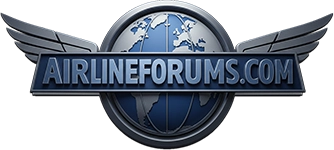Looks like it is true:
An Important Message from CEO Doug Parker
June 12, 2008
Dear Fellow Employees:
Last Friday, the price of oil surged nine dollars in one day to nearly $140 a barrel, setting a new historic high. As has been reported for months, sustained oil prices have created a financial crisis for our industry. For US Airways, the average fuel cost to carry one passenger on a round-trip in 2008 is $299 versus $151 in 2007. In 2000, that same cost was $70!
The economic rules of our industry have changed substantially and we simply can’t keep running the same plays. We have too many seats (supply) in the marketplace and not enough demand for those seats to raise fares. That leaves us with two options: reduce seats and find new revenue streams.
Today we announced plans to do both with the goal of returning US Airways to sustained profitability in this challenging environment. Similar actions have already been announced by other airlines.
Effective with our fall schedule, we’ll reduce flying across our system by returning some aircraft later this year and in 2009. We’re also planning to reduce additional aircraft in 2009 and 2010. In Las Vegas, we’re pulling most of our night operation primarily because as the price of fuel has gone up, incremental flying (used by airplanes sitting overnight) is now unprofitable.
In addition, we are introducing a $15 first checked bag service fee and a fee for the sale of in-flight beverages, which will start later this summer. We’re making some changes to our Dividend Miles program and will increase other administrative fees to offset costs associated with those services. As is often the case, we’ve chosen to be more aggressive than our competitors with some of these programs, but these are changes that are wholly appropriate in this new world. To offset the soaring fuel-related cost of transporting passengers that I mentioned above, we are also increasing the employee guest and parent pass fees.
Unfortunately, employees will be impacted by today’s announcement. One of the results of today’s actions is that we’ll need approximately 1,700 fewer employees once all of the capacity reductions are made. For front line employees, the staffing reduction is expected to be handled through attrition throughout the summer. Any necessary furloughs following the summer travel season will be mitigated by voluntary leaves of absence as permitted by our respective labor contracts. In workgroups with lower attrition, such as pilots, or where we don’t receive sufficient leave requests, the result will be to furlough where necessary.
For some workgroups, the way you do your job will change. We’re working hard to ensure our customer service, airport and in-flight teams have all of the support and tools they’ll need to manage these new programs, and there will be more specific information for each workgroup over the next weeks.
All of the actions we’re announcing today, when combined with the capacity other airlines have already announced, will have a materially positive effect on the financial performance of US Airways going forward. Our team has been here before and we won’t sit by and wait for external circumstances to dictate our future. A lot of “experts†are counting us out – but like all of you, I can’t wait to prove them wrong again. As part of my commitment to achieve this goal, as well as reaffirming my belief in our company, I’ve made the decision to invest an amount equal to my 2008 salary into US Airways by buying stock in the open market at the next trading opportunity for insiders.
We’re communicating a lot of information today through a special issue of AboutUS, video interviews with company leaders, Frequently Asked Questions/Answers, and other information on Wings and theHub (wings.usairways.com or theHub.usairways.com). If you have a question, we’ll do our best to try to get an answer for you quickly. Just send a note to corporate.communications@usairways.com.
Thanks for all you do each and every day. You are doing a great job of taking care of our customers. Please keep it up.
